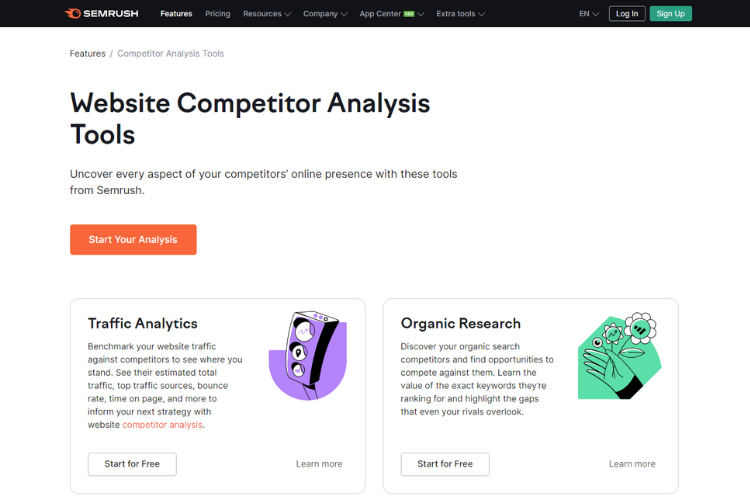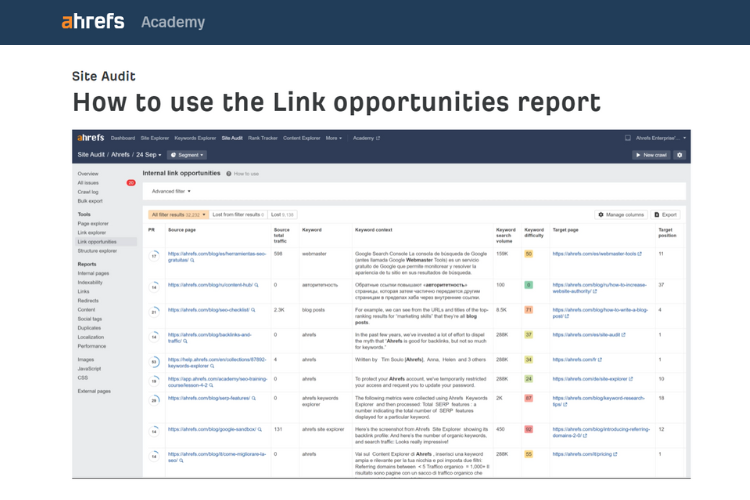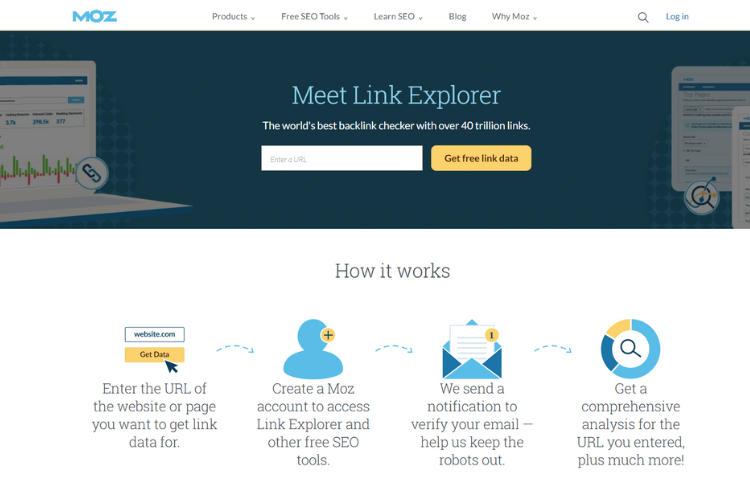Our Links Are Trusted By 2,500+ SEO Agencies
Our Links Are Trusted By 2,500+ SEO Agencies
By the Rhino Rank team
18th Jul 2023

Analyzing and checking your competitors’ backlinks is crucial to understanding their SEO strategy and improving your own website’s ranking. By examining your competitors’ backlinks, you can identify potential opportunities for link building and discover new sources for high-quality backlinks.
To begin analyzing your competitors’ backlinks, you’ll need an SEO tool like Ahrefs, which is consistently voted as a top industry tool. Ahrefs allows you to easily view your competitors’ backlink profiles and identify the domains linking to their website. With this information, you can determine which domains are linking to multiple competitors and prioritize those for outreach.
By performing a competitor backlink analysis, you can also gain insights into the types of content that are attracting high-quality backlinks. This can help you create a content strategy that is more likely to generate backlinks and improve your website’s SEO. With the right tools and strategy, analyzing and checking your competitors’ backlinks can be a valuable way to improve your website’s ranking and drive more traffic to your site.
Backlinks are an essential part of search engine optimization (SEO) and can have a significant impact on a website’s ranking. In this section, we will explore the role of backlinks in SEO and their impact on website ranking.
Backlinks are links from one website to another. They are also known as inbound links or incoming links. Backlinks are important for SEO because they signal to search engines that other websites consider your content valuable and relevant. When a website links to your site, it is essentially vouching for your content.
Search engines like Google use backlinks as a ranking factor. The more high-quality backlinks a website has, the higher it is likely to rank in search engine results pages (SERPs). However, not all backlinks are created equal. Search engines consider the quality, relevance, and authority of the linking website when evaluating backlinks.
Backlinks can have a significant impact on a website’s ranking. When a website has more high-quality backlinks, it is more likely to rank higher in search engine results pages. This is because search engines consider backlinks as a vote of confidence in the content of the linked website.
However, it is important to note that not all backlinks are equal. A website with a few high-quality backlinks may outrank a website with many low-quality backlinks. Search engines consider the quality, relevance, and authority of the linking website when evaluating backlinks.
In conclusion, backlinks are an important part of SEO and can have a significant impact on a website’s ranking. It is important to focus on building high-quality backlinks from authoritative websites.
To perform a competitor backlink analysis, the first step is to identify your competitors. You may already have a list of competitors in mind, but it’s important to ensure that you are not missing any potential competitors.
One way to identify competitors is to search for the keywords that you are targeting and see which websites are ranking for those keywords. This can be done using tools like Ahrefs’ Site Explorer or Google Search.
Another way to identify competitors is to look for companies that offer similar products or services as your own. This can include both direct competitors, who offer the same products or services as you, and indirect competitors, who sell similar products but operate in different areas.
It’s also important to consider perceived competitors, who may not offer the same products or services as you but compete for the same customer base. For example, a company that sells luxury watches may consider high-end jewelry stores as perceived competitors.
Once you have identified your competitors, it’s important to prioritize them based on their relevance and authority. This can be done by looking at website traffic, social media following, and domain authority.
By identifying your competitors and prioritizing them based on their authority, you can gain valuable insights into their backlink profiles and develop a more effective link building strategy for your own website.
When it comes to analyzing your competitors’ backlinks, there are several tools available in the market that can help you do so effectively. In this section, we will discuss three of the most popular tools for analyzing competitor’s backlinks – SEMRush, Ahrefs, and Moz.

SEMRush is a comprehensive tool that offers a wide range of features for SEO professionals. One of its key features is the ability to analyze your competitor’s backlinks. With SEMRush, you can get a detailed report on your competitor’s backlink profile, including the number of backlinks, the domains linking to them, and the anchor text used.
SEMRush also provides a backlink gap analysis feature that allows you to compare your backlink profile with your competitors and identify link building opportunities. Additionally, SEMRush’s backlink audit feature can help you identify toxic links that may be harming your website’s ranking.

Ahrefs is one of the most popular tools for backlink analysis. It has a massive database of backlinks and provides detailed reports on your competitor’s backlink profile. With Ahrefs, you can get information on the number of backlinks, referring domains, and the anchor text used.
Ahrefs also provides a feature called “Link Intersect” that allows you to identify websites that are linking to your competitors but not to your website. This feature can help you identify link building opportunities.

Moz is another popular tool for backlink analysis. It provides a range of features for SEO professionals, including a backlink analysis tool. With Moz, you can get detailed reports on your competitor’s backlink profile, including the number of backlinks, the domains linking to them, and the anchor text used.
Moz also provides a feature called “Link Explorer” that allows you to identify the top pages on your competitor’s website that are attracting the most backlinks. This feature can help you identify content gaps on your website and create content that attracts more backlinks.
In conclusion, when it comes to analyzing your competitor’s backlinks, there are several tools available in the market that can help you do so effectively. SEMRush, Ahrefs, and Moz are three of the most popular tools for backlink analysis and offer a range of features that can help you identify opportunities for link building and improve your website’s ranking.
When it comes to analyzing backlinks, quality is more important than quantity. In order to determine the quality of a backlink, it is important to consider the relevance and authority of the linking site.
The relevance of the linking site is a crucial factor in determining the quality of a backlink. A backlink from a site that is relevant to your niche or industry is more valuable than a backlink from a site that is not relevant.
To determine the relevance of a linking site, you can consider the following factors:
The authority of the linking site is another important factor in determining the quality of a backlink. A backlink from a site with high authority is more valuable than a backlink from a site with low authority.
To determine the authority of a linking site, you can consider the following factors:
By considering the relevance and authority of the linking site, you can determine the quality of a backlink and use this information to improve your own backlink profile.
When it comes to improving your website’s search engine ranking, building backlinks is an essential task. However, it can be challenging to know where to start. One approach is to analyze your competitors’ backlink strategies. This section will discuss some of the key factors to consider when checking your competitors’ backlinks.
One of the first things to look at when analyzing your competitors’ backlinks is the link building techniques they are using. Are they focusing on guest posting, social media, or other tactics? By understanding their approach, you can gain insights into what might work well for your own website.
Another important factor to consider is the quality of your competitor’s backlinks. While having a large number of backlinks can be beneficial, it’s essential to focus on quality over quantity. High-quality backlinks from authoritative websites are more valuable than numerous low-quality links.
To evaluate the quality of your competitor’s backlinks, you can use tools like Ahrefs or Moz. These tools can provide information about the domain authority, page authority, and other metrics for each backlink.
In conclusion, analyzing your competitors’ backlink strategies can be a valuable step in improving your own website’s search engine ranking. By focusing on link building techniques and quality over quantity, you can gain insights and develop a more effective backlink strategy for your website.
When it comes to analyzing competitor’s backlinks, there are two main goals: identifying opportunities and avoiding their mistakes. By analyzing the links that point to their website, you can learn a lot about their SEO strategy and use that knowledge to improve your own.
One of the main benefits of analyzing your competitor’s backlinks is that it can help you identify new link building opportunities. By analyzing the links that are pointing to their website, you can identify websites that might be interested in linking to your own site.
For example, if you notice that a lot of your competitor’s backlinks are coming from industry-specific blogs, you might want to reach out to those bloggers and see if they would be interested in linking to your site as well. Similarly, if you notice that your competitor has a lot of links from local directories, you might want to consider submitting your own site to those directories as well.
Another benefit of analyzing your competitor’s backlinks is that it can help you avoid making the same mistakes they did. By analyzing the links that are pointing to their website, you can identify any spammy or low-quality links that they might have acquired.
For example, if you notice that your competitor has a lot of links from low-quality directories or blog comments, you can make sure to avoid those types of links in your own link building efforts. Similarly, if you notice that your competitor has a lot of links from websites that have been penalized by Google, you can make sure to avoid those websites as well.
Overall, analyzing your competitor’s backlinks can be a valuable tool in your SEO strategy. By identifying new link building opportunities and avoiding their mistakes, you can improve your own website’s search engine rankings and drive more traffic to your site.
When it comes to developing a backlink strategy, there are a few key factors to keep in mind. The first step is to create quality content that is both informative and engaging. This will help to attract natural backlinks from other websites.
Creating quality content is essential for any successful backlink strategy. This means creating content that is informative, engaging, and relevant to your target audience. When creating content, keep in mind the following tips:
By creating quality content, you can attract natural backlinks from other websites, which can help to improve your search engine rankings.
Another important factor in developing a backlink strategy is building relationships with other websites in your industry. This can be done by networking with other website owners, participating in industry forums and groups, and reaching out to other websites to request backlinks.
When building relationships, keep in mind the following tips:
By building relationships with other websites, you can increase your chances of receiving backlinks, which can help to improve your search engine rankings.
Overall, developing a backlink strategy takes time and effort. By creating quality content and building relationships with other websites, you can attract natural backlinks and improve your search engine rankings.
Once you have conducted a backlink analysis and identified your competitors’ backlinks, it’s essential to monitor your backlinks over time. This process will help you ensure that your website’s links remain relevant and high-quality, and you are not losing any valuable links.
To monitor your authoritative backlinks, you can use various tools available online, such as Ahrefs, SEMrush, or Moz. These tools will help you track your backlinks’ performance and give you insights into how they are impacting your website’s search engine ranking.
One important metric to track is the number of referring domains linking to your website. This metric indicates how many unique websites are linking to your website. The more referring domains you have, the more authoritative and trustworthy your website appears to search engines.
Another crucial metric to monitor is your website’s domain rating (DR) or domain authority (DA). These metrics provide an overall score of your website’s authority and influence in your industry. A higher DR or DA score means that your website is more likely to rank higher in search engine results pages (SERPs).
It’s also essential to keep an eye on the anchor text used in your backlinks. Anchor text is the clickable text that appears in a hyperlink. Ensure that the anchor text used in your backlinks is relevant to the content on your website and does not appear spammy or manipulative.
Finally, regularly check for broken links or links that are no longer relevant. Broken links can harm your website’s user experience and negatively impact your search engine ranking.
By monitoring your backlinks over time, you can ensure that your website’s links remain high-quality and relevant, and you are not losing any valuable links.
To analyze your competitors’ backlinks, use SEO tools like Ahrefs, SEMrush, or Moz. These tools provide detailed reports on your competitors’ backlink profiles, including the number of backlinks, referring domains, and anchor texts used.
You can determine the quality of a backlink by assessing the relevance and authority of the linking site. Use metrics like Domain Authority (DA), Page Authority (PA), Trust Flow (TF), and Citation Flow (CF) to evaluate the linking site’s quality.

Join 18,000+ Businesses Growing with Rhino Rank
Sign Up